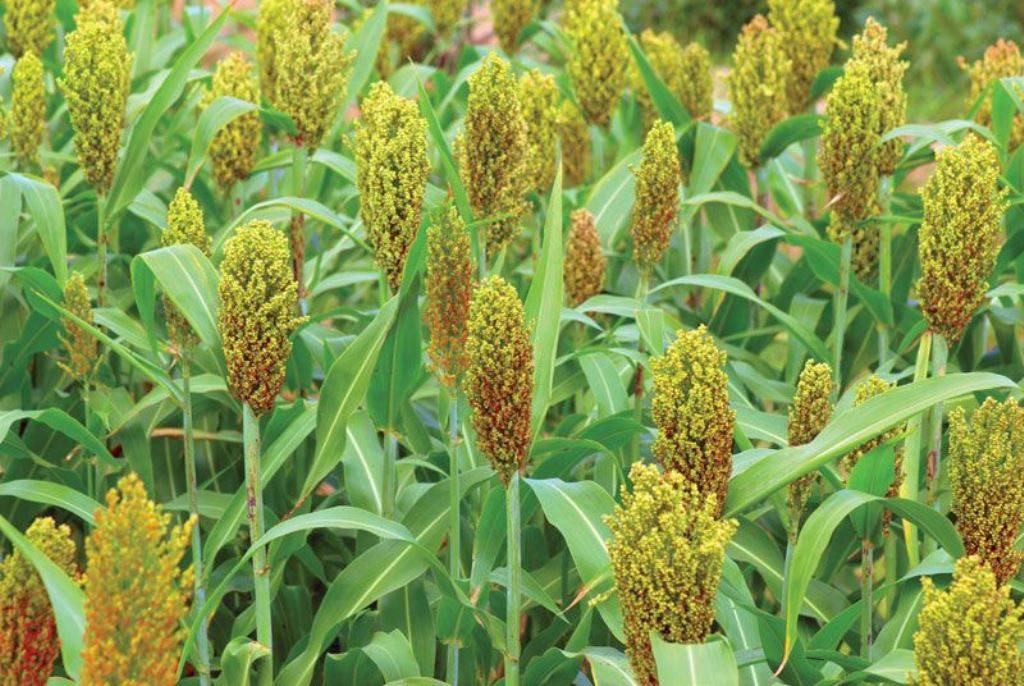
Buckwheat is a short-seasoned crop that needs 10-12 weeks to mature. It is an herbaceous plant from the Polygonaceae family and its seeds are edible. Buckwheat is cultivated for its grainy seeds and also as a cover crop. Buckwheat is also known for only requiring moderate soil fertility to grow.
Plant name- Buckwheat
Scientific name- Fagopyrum esculentum
Family- Polygonaceae
Hindi common name- कूटू
Introduction
Buckwheat is one of the most important green manure crops that produce nutrition-rich triangular seeds. Buckwheat is called a phosphorus pump because it takes up soil phosphorus and then returns it in a planet-friendly way.
Location
Jammu and Kashmir, Ladakh, Kargil, Gurez Valley, Uttarakhand, Himachal Pradesh, Chattisgarh, Uttar Pradesh are the major buckwheat producing states in India.
Season
-
Buckwheat seeds should be sown in the months of October and November.
-
It can also be grown from February to October in controlled conditions.
Climate
-
Buckwheat is mostly grown in areas with a cool and moist climate.
-
It can be grown up north at high altitudes because its growing period is rather short and the heat requirement for growth is low as well.
-
However, the crop is highly sensitive to extreme weather and dies pretty easily in unfavorable conditions like freezing temperatures during fall and spring.
-
Even high temperatures and dry weather at the blooming time can prevent seed formation. So, the ideal temperature for buckwheat crops to grow healthily is 21 degrees Celsius.
Soil Requirements
-
Buckwheat grows easily on moderately fertile soil.
-
It can tolerate soil pH levels as low as 4.8, however, it cannot tolerate stressful conditions and poorly prepared soil.
-
Its thin roots can penetrate the soil easily but will die during flooding or drought.
-
Buckwheat is known for growing on a wide range of soil types and fertility rates. It produces a much better crop on infertile and poorly drained soils if the climate is moist than other grains-producing crops.
-
However, buckwheat performs poorly on fertile soil.
-
The buckwheat crop also tolerates high soil acidity better than the other grain crops.
-
The best-suited soil for buckwheat to grow is light to medium textured and drained soil like sandy loams, silt loams, and loams.
-
And it does not grow well in heavy, wet soils and soils that contain huge amounts of limestone.
Land Preparation
-
It is important to prepare a good seedbed before planting buckwheat as it has very fine roots. Prepare the land a few weeks in advance when the soil is easier to work with and moisture is available for crop growth.
-
While preparing the land, create drainage around the seed because the seed will rot if water collects around it.
-
Buckwheat seeds are small in size and have a shallow root system which means it needs a firm seedbed for good buckwheat production.
-
A firm seedbed should allow easy absorption of nutrients for fast growth and to reduce loss from drought.
-
If the seedbed is already plowed, just disking or harrowing the plot is required for preparation.
Seed Rate and Seed Time
-
The seed rate of 20kg/hectare is advised as a sufficient amount for a productive grain yield.
-
Applying 20kg of N, 10kg of P2O5, and K2O per hectare one day before sowing the seeds gives the best yield.
-
To avoid the first frost in September and the heat of July month, it’s important to sow the buckwheat early.
Fertilizers
-
A lot of farmers do not fertilize buckwheat because of its low value and moderate fertility needs, but for a higher yield, it is necessary to use fertilizers.
-
Nitrogen fertilizer can help improve the growth rate, especially if the soil is depleted of N.
-
However, only low rates of N should be used as 20kg of nitrogen per acre can lead to lodging.
-
Although buckwheat has a modest soil nutrient requirement as compared to the other grains, if fertilizers are not applied, the absorption of soil nutrients by buckwheat can leave the soil depleted of nutrients for the following crops.
Harvesting and Yield
-
The optimum time to harvest buckwheat is when the grains are mature but the plant is still green.
-
When the seeds turn a dark brown, it means it’s ripe and ready to be harvested. This happens 8-10 weeks after the seeding.
-
Commercial farmers use swathing or winding methods to remove the seeds but for a small crop, you can use threshing to remove the seeds.
-
How does kuttu grow?
The buckwheat plant can grow in a variety of soil conditions and fertility levels. If the climate is humid, it grows better than other grains on barren, poorly drained soils and is effective at extracting phosphorus with a low availability from the soil. Buckwheat also has a bad habit of sticking out on fertile soils.
-
Where is kuttu grown in India?
The largest buckwheat-producing states in India are Jammu and Kashmir, Ladakh, Kargil, Gurez Valley, Uttarakhand, Himachal Pradesh, Chattisgarh, and Uttar Pradesh.
-
How many days does buckwheat to grow?
Due to the uncertain growing behavior of buckwheat, the crop does not mature consistently. Five to six weeks after seeding, plants will start to bloom, and they will reach maturity in 80 to 90 days.


















